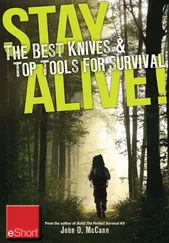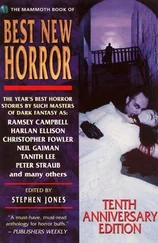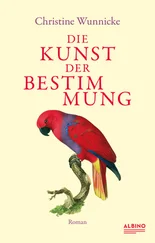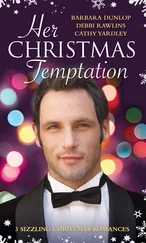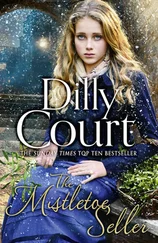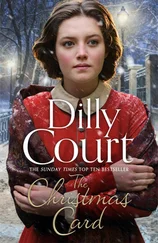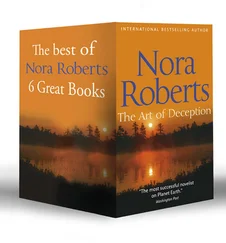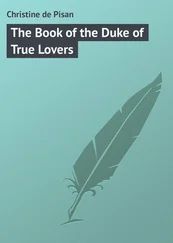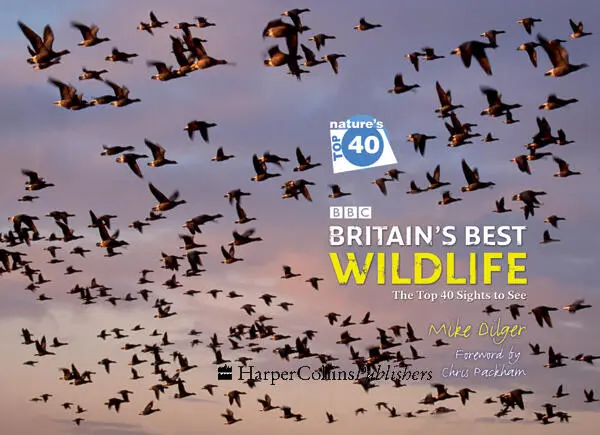
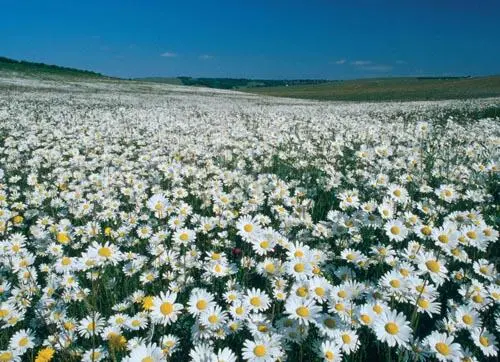
Dedicated to my dad … you would have been chuffed to bits
Cover
Title Page
Dedication
Foreword by Chris Packham
Introduction
40 Mating natterjacks
39 Wood ant nests
38 Displaying glow-worms
37 Playing fox cubs
36 Trapping moths
35 Grey seals pupping
34 Winter high tide roost
33 Machair in summer
32 Wild goats rutting
31 Swallows and martins feeding
30 Otters fishing
29 Roosting rooks
28 Pipistrelle bats swarming
27 Clouds of butterflies
26 Terns attacking
25 Pine martens hunting
24 Roosting parakeets
23 Dancing cranes
22 Hunting peregrines
21 Spiders’ webs
20 Wheeling puffins
19 Autumnal trees and toadstools
18 Wild orchid displays
17 Whale watching
16 Courting great crested grebes
15 Leaping dolphins
14 Boxing hares
13 Sea eagles fishing
12 Rutting red deer
11 Flocking pink-footed geese
10 Barn owls hunting
9 Basking sharks feeding
8 Dancing adders
7 Bluebell displays
6 Dawn chorus
5 Meadows in summer
4 Lekking black grouse
3 Leaping salmon
2 Roosting starlings
1 Diving gannets
Index
Acknowledgements
Keep Reading
Copyright
About the Publisher
by Chris Packham
I made my first list when I was about eight. I thought nothing of it; it seemed perfectly natural. I was obsessed with reptiles at the time, which seemed normal too, and I’d come down from the heady heights of the dinosaurs to the British Six, as my list was called. Adder, grass snake, smooth snake, sand lizard, common or viviparous lizard and slow worm were the words so neatly inscribed in my book, even if I didn’t know what viviparous meant and had to be careful spelling it. I had four out of six ticks alongside them, not bad thinking about it now, but seriously disappointing for the obsessive young naturalist who had to wait an eternity – until he was twelve – to put the final mark alongside sand lizard. Lying in bed that May night wrapped in the warmth of smug satisfaction, I then wondered if I could be the youngest person ever to see the all of the UK’s native reptiles.
Several things are revealed by this admission: that list-making is a very important part of any naturalist’s behaviour; that an incomplete list can cause real distress and lead to an increase in obsessive behaviour; and that lists have a strong competitive component. When you think about it, they are only made to be completed. Shopping lists, wedding lists, they are all made up of things that we need, and the difference between want and need is a notable one. So, listing things is sometimes helpful but patently questionable, and I’m not sure that it makes you particularly happy sometimes, either. But I am certain that it gets you out of bed and that it can act as a wonderful fuel to get your life lived more fully. Oh, and people say that listing is geeky. So what? If you’ve picked up and paid for this book you are at least a little bit geeky, and that’s good; be proud of it!
It’s tempting to imagine that naturalists invented listing, but I’m sure it would be hotly contested from many sides. Historians are also consummate listers, and collectors of anything are listers par excellence, but I think we hold our own. I have a British bird list, a world bird list, a garden bird list, a dogwalking bird list, a garden moth list, a British butterfly and bat and amphibian list, an orchid list, a travel list … and, to be fair, that’s nothing. I’m an amateur when it comes to listing. But these are all empirical lists; there are also the subjective lists – and these are very exciting because they are dynamic and more interactive. We brag about the former, but we debate the latter.
My Top Ten Favourite Films Of All Time (the last bit is fabulously childish, but necessarily demonstrative, and should follow all such list titles) obviously bears no resemblance to the list from which I was trying so hard to tick smooth snakes and sand lizards, although Raquel Welch of the One Million Years BC era still features in several lists. And it can be thrown into turmoil by a single release; it can require a systematic reappraisal, taking hours and contentious ‘discussion’ with my movie guru James. And that is great, too, because opinionated lists must be argued about as a matter of honour. I mean, how can this self-appointed ‘guru’ have Blade II in his Top Ten? Or, more to the point, how the hell did black grouse lekking make it into the Top Five of this list when glow-worms are languishing in the 30s? And who seriously thought: it’s right that a spider’s web is not Top Ten material? And, to my mind, puffins should not be seen or heard in any list, gaudy little chavs. Starlings, swirling about going to roost, good, but so passé. That’s like still having The Italian Job in your Top Ten Movies. I mean, come on, update will you?
What is even more exciting about Nature’s Top 40 than the order is that it’s a UK-based list, and that it finally gives us a chance to bunch together a set of spectacles, which undeniably deserve their status, if not their final positions, in your or my opinion! It proves beyond doubt that the UK is not the land of ‘little brown jobs’, or ‘quite good for its seabird colonies’, or ‘has a few nice spots’; it is rich in things that can stop you in your tracks, make your heart miss a beat, make you hold your breath, make you travel a hundred miles, make you want to shout out loud, make you make lists of things it will make you do!
Joking aside – and I know that many of you will immediately count through to see how many of this 40 you have already seen – the actual ‘final’ positions don’t matter. What does is that you use this list to get you out to experience and enjoy these spectacles first-hand and that you get some youngsters out there with you. Ask yourself this: how many twelve year olds today have seen all the UK’s reptiles in the wild, or, more importantly, lie awake wanting to? If this list is to endure, we need some more of these apprentice listers, and that could be down to you.
Chris Packham
2008
PS The answer is … I’ve seen 37. I haven’t seen the roosting parakeets or the wild goats, and I would most like to get to grips with adders dancing.
Music charts lend themselves to a list according to their popularity based on the solid statistics of sales volume, as do films, and of course computer games and books … but wildlife? Some may wonder how we dare make a Top 40 list of Britain’s greatest wildlife spectacles in such a manner, and may feel that the act of giving each of our chosen entries a number might even cheapen the very spectacle we have filmed and written about.
Others will be indignant that their favourite spectacle has unfairly been demoted to the lower regions of the Top 40. But look down any of the numerous Top 40 lists that have formed the basis of a variety of television programmes, such as the Funniest Moments on TV. Undoubtedly part of the fun is exclaiming in a faux-indignant way that the clip of talk-show host Russell Harty being attacked by Grace Jones is not as funny as the lower-ranked, but hilarious, moment where a slightly-worse for-wear Delia Smith screams, ‘Lets be having you!’ to a bemused Norwich City football crowd at half-time. There will also be those wildlife purists not best pleased that immigrant (and therefore ‘lesser’) spectacles, such as ‘parakeet roosts’ and ‘rutting goats’, have audaciously elbowed a spot in the list and now vie for attention alongside our native British spectacles. And, come to think of it, why are badgers playing and kingfishers fishing completely absent from the list altogether?
Читать дальше



